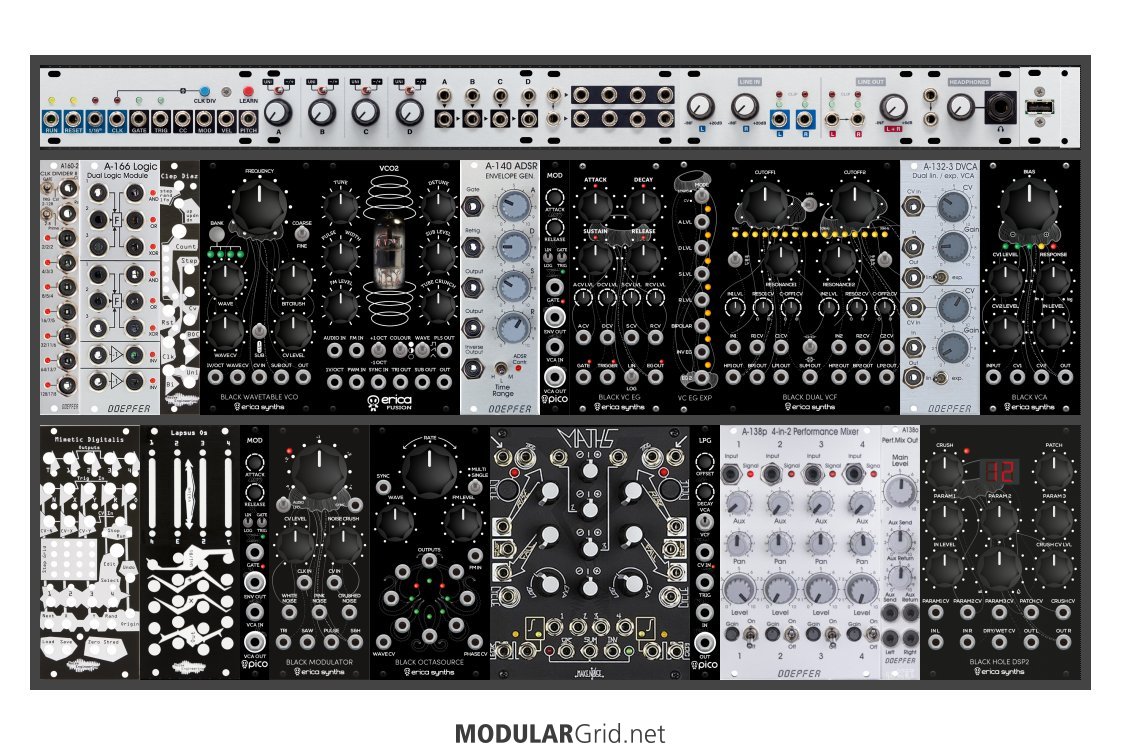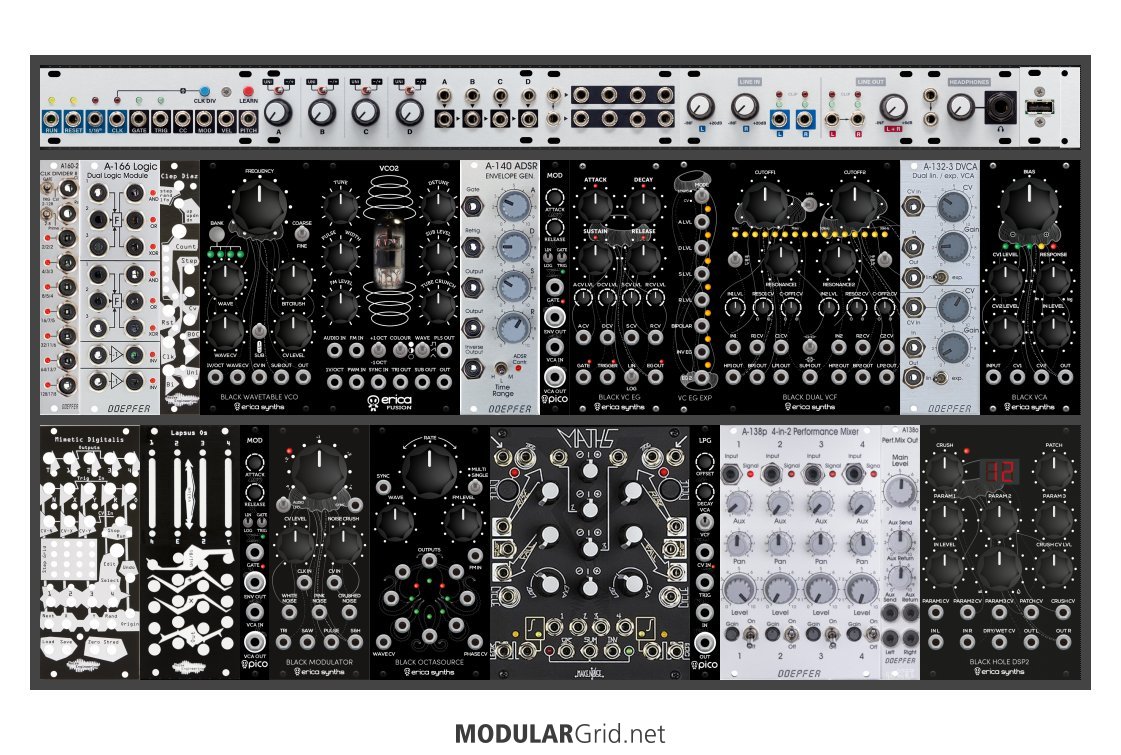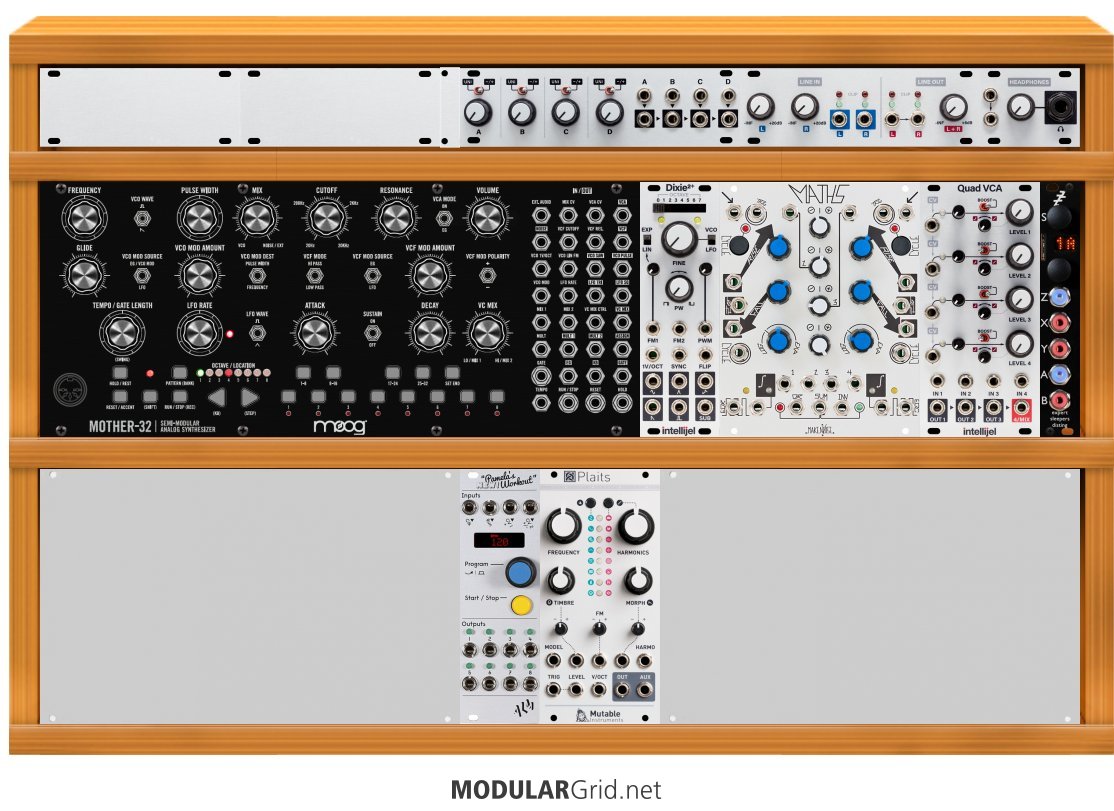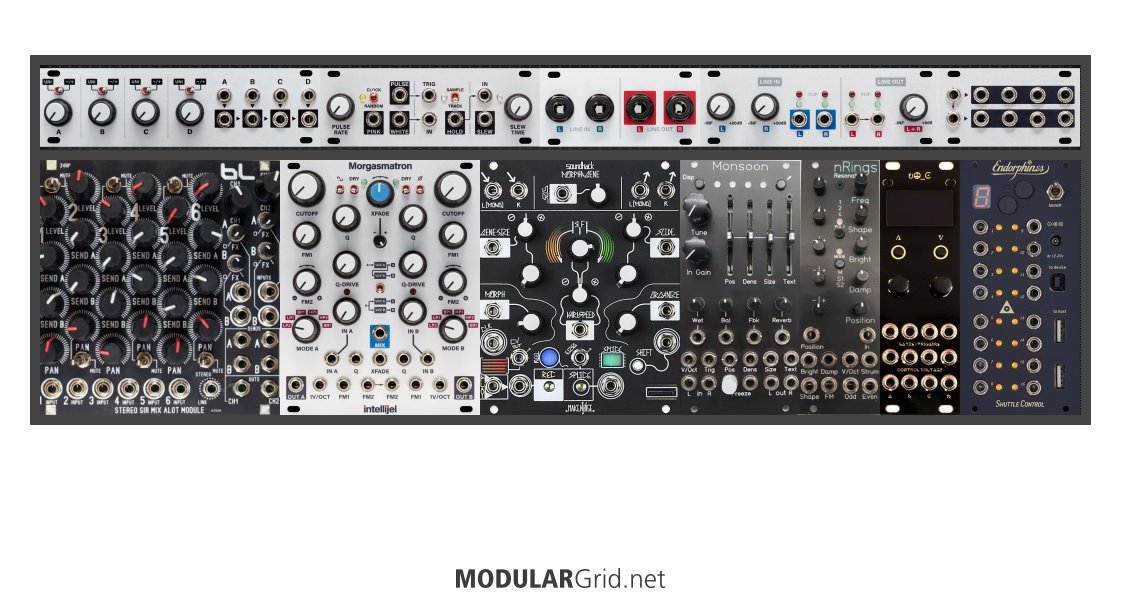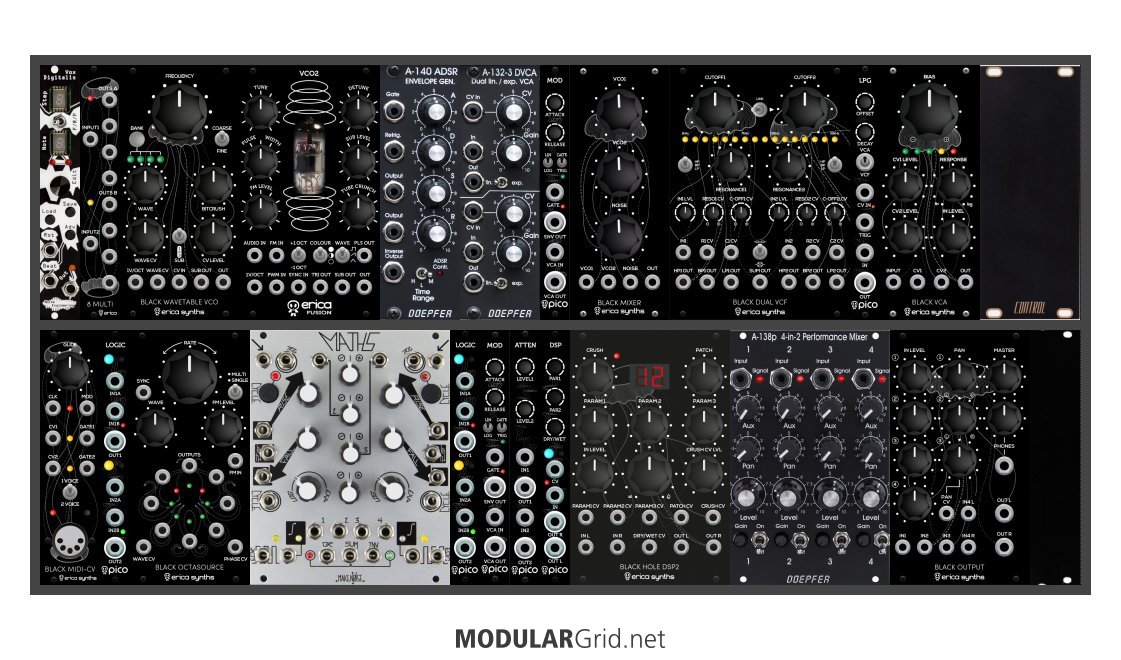Hi Garfield !
Wow, thanks a lot for the great feedback ! I’m really appreciative of the detailed answer, helps me out tremendously :)
So taking into account your input, here is v2:
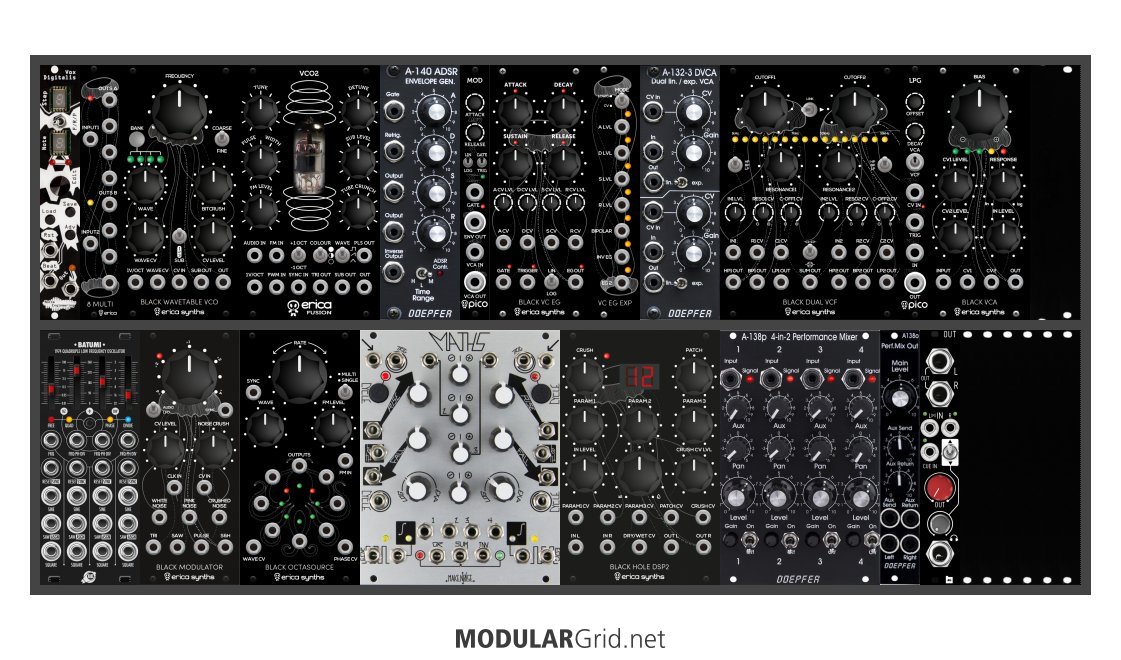
I understand your concern with the Pico modules. In fact, I have the same concern, but my plan was to use them as “set once and forget” modules, setting parameter values for the patch and the never touch it again until the next patch, as opposed to bigger modules with bigger knobs and more space I will use in a more performance-oriented manner. Now that you’re expressing those doubts, I’m thinking I should really see if those couldn’t be replaced by more user friendly modules.
You’re absolutely right about EG’s, the A-140v alone probably isn’t enough. I was originally thinking that the Pico MOD’s that I added would do the job (I put one between the VCA module and the mixer), but taking into accounts your remarks about the size of the modules not being practical, I’m now leaning again towards a bigger EG module. Turns out the Black VC EG and its expander have been discontinued but they still have some stock over at Erica Synths, with a nice discount (40%), I’ll go for that. There would still be some room left for another A-140v but would that be useful ?
I’m not sure either why the Black Mixer was left in there, I added the beefier Doepfer mixer and forgot to take the Black Mixer out but indeed it’s not needed, well spotted. Frees up some space for that EG and its expander too :)
For output, I have no idea what I was thinking, thanks a bunch for setting me straight ! So I got rid of the Erica Synths Output module and introduced the 138-o. For the final balanced output, the Intellijel Audio I/O brings balanced input to the game so I could bring the rest of the instruments easily but I went with the Befaco Output for now because Audio I/O has no headphone output, which I think would come really handy for “quick” patching jams with just the modular. I’m no expert at levels, but using a 3.5mm To 1 / 4" Jack adapter, couldn’t I simply plug my desktop synth output to say the Black Hole module input ? That would be neat ! It would totally kill the need for an Intellijel’s Audio I/O, wouldn’t need such a complete i/o module. I'll do some research.
About the double modules, you’re right again, there are duplicates: the 2 Pico Logic were there to provide Maths-like functions but it might just be overkill. Erica Synths confirmed over email that the reason I can’t find any on their site is because they have been discontinued, so I guess that solves the issue. The 2 Pico Mod were, well, me guessing they’d be fun and that you can never have too much modulation. The v2 of my rack only has 1. Pico DSP was to complement the Black Hole, basically to have 2 independent effects on 2 different sound sources to blend them together at the end of the chain, but my plan was to get only the Black Hole first and see what’s up. I removed the Pico DSP, I’ll see if that space gets filled up by something else.
You bring valid points about the presence of the Pico Atten while already having similar modules and since Erica Synths confirmed that module has also been discontinued, it’s now simply gone.
I agree again with the need for more LFOs. Erica Synths Modulator was discontinued by Erica Synths as well so that’s another one I’ll get on discount I suppose. It has multiple outs. I also added a Batumi from Xaoc Devices in the plan but that’s probably one that will come later.
Another thing I did is get rid of the MIDI module, I figure the Analog Four that I already own has 4 CV outputs so I’ll just use those. I might get one of those BeatStep Pro that everyone seems to be rocking or some other similar CV sequencer in case I need more, the MIDI was a way to reduce things to only OT + modular, I'm still undecided about that. I guess the plan is to start without it and see what makes sense while playing.
About the number of rows, my plan is to get a TipTop Audio Mantis case, those are 2 rows of 104 HP, hence my choice. Would it be a terrible idea to get a separate single row 104 HP skiff when it’s time ? I expect that since my drum needs are way too complex to create from modular, I’ll rock the OT for that, so extra modular needs would come much later ? Maybe I’m just naïve, I honestly don’t know what to think here, one one hand the case is pretty filled already, on the other hand this setup seems like it’s going to keep me both busy (and poor) for a while. Foolish ?
I hereby promise to report on Maths, Black Hole DSP and Dual VCF modules once they’re home and I’ve had time to play with them a bit, seems like I owe you that at least :)
Again, thanks a lot for the time you took to help a stranger, it is super helpful !
All the best,
Diego
--- Voltage control all the things ---

